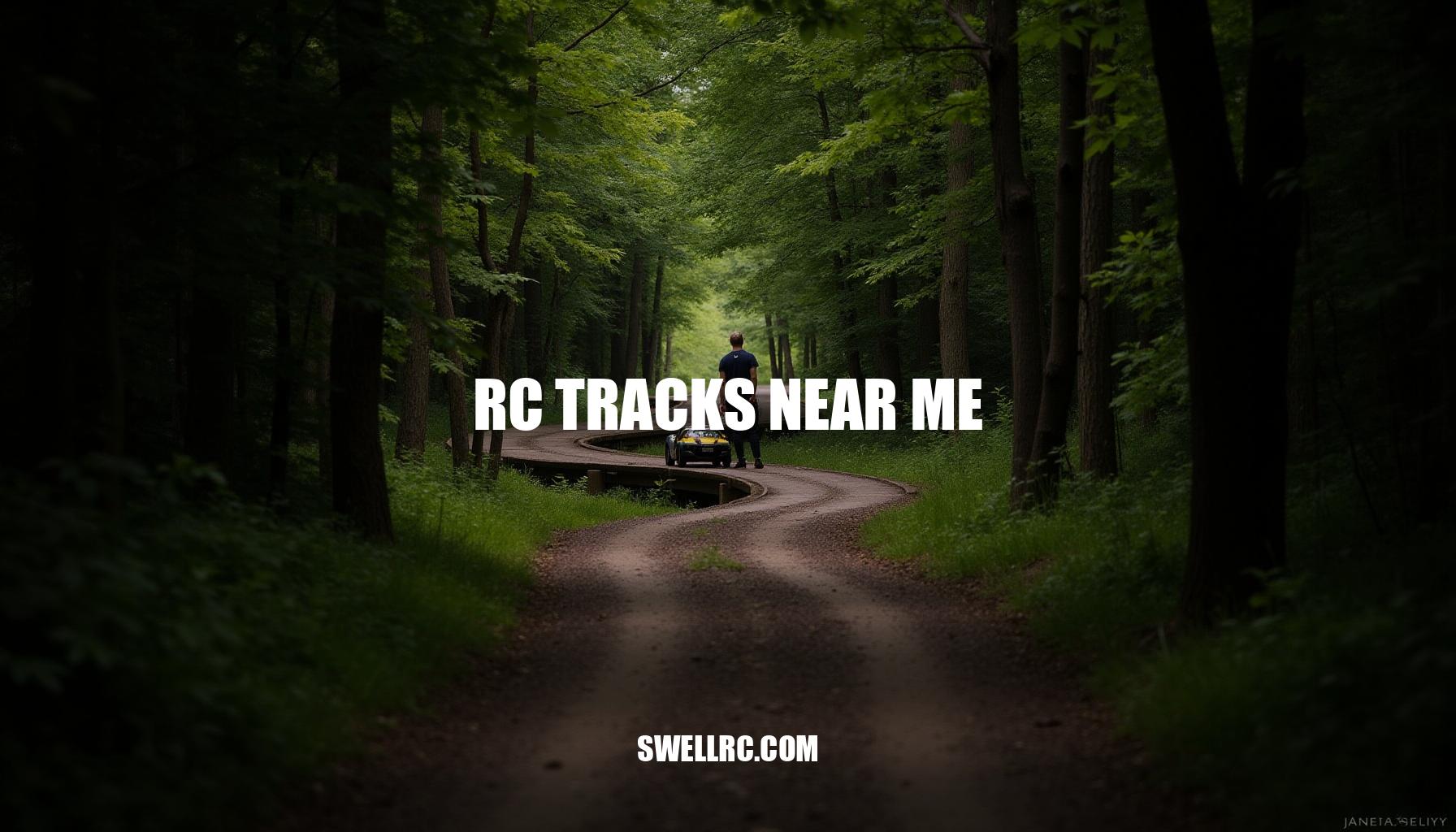Discovering RC Tracks Near Me: A Journey of Skill, Community, and Connection
The first time I typed “RC tracks near me” into my phone, I didn’t just find a place to run—I found a scene. What I discovered genuinely blew my mind: tucked behind warehouses, beside lakes, and at local flying fields were passionate communities tuning, testing, and trading tips. From tight indoor RC tracks perfect for drifting to sunbaked outdoor dirt ovals and smooth asphalt touring layouts, every track felt like a blend of sport, engineering, and pure play.
Whether you’re one of the RC racing beginners or a seasoned pro, understanding how different RC track types change your driving experience is key to enjoying this exciting hobby. If you’re just getting started, start with this handy hub: RC race tracks near me. In this guide, I’ll share what I learned the hard (and fun) way: where to hunt for the best local spots, how to plug into RC clubs and local RC communities, and the setup and maintenance tricks that actually matter for your remote control cars.
By the end, you’ll have the know-how and resources to roll up, plug in a pack, and feel right at home at your next local track, fully immersed in the world of RC hobbies and racing.
Understanding the RC Track Scene: A World of Variety
After months of visiting local spots and trading notes with track directors, one truth stood out: the surface decides the experience on RC car racing tracks and beyond. Each track surface offers a unique feeling, impacting grip levels and the way vehicles handle. Whether you’re into RC drift track setups or the thrill of RC dirt tracks, understanding these nuances takes your racing to the next level.
| Surface | Best For | Feel & Grip Levels |
|---|---|---|
| Carpet (Indoor/Outdoor RC tracks) | 1/10 Touring, 1/12 Pan Car | Super consistent grip, razor-sharp steering, minimal dust buildup |
| Polished Concrete / P-tile (RC Drift Track Setups) | 1/10 Drift Cars | Predictable slip angles, throttle steering precision, ideal for style-driven tandems |
| Clay / Dirt (RC Dirt Tracks, RC Dirt Oval) | 1/10–1/8 Buggy/Truggy, Late Models | Evolving groove lines, changing traction, demanding jump rhythm |
| Asphalt (Indoor/Outdoor RC Tracks) | 1/10 Touring/GT, F1 Classes | Temperature-sensitive grip, tire management crucial for performance |
| Water (RC Boat Racing Locations) | Electric & Sail Boats | Wind and water conditions define racing dynamics; access and local rules matter |
| Airspace (RC Flying Fields) | Park Flyers to Larger Electrics | Requires wind discipline, line-of-sight awareness, and coordinated flight patterns |
Whether you’re practicing at RC car racing tracks or experimenting with tire choices and gearing on different surfaces, this knowledge makes a huge difference. From indoor/outdoor RC tracks to RC boat racing locations and RC flying fields, the terrain reshapes your strategy—helping you optimize ride height, tire compounds, and throttle control for maximum enjoyment and competitive edge.
Finding Local RC Tracks: How I Tracked Down the Best Spots
Finding the best spots for RC racing combines modern online research with classic community scouting. When you ask, “Where can I race RC cars near me?”, start by exploring RC racing directories and joining forums or Facebook groups focused on RC tracks and clubs. These resources often list race schedules, practice times, and open track days that guide you to active hubs.
After you identify some potential locations, tap into local expertise by visiting hobby shops; their staff pride themselves on sharing hobby shop tips about which tracks boast the best surface prep and turnout.
Beyond car racing, expanding your search to RC sailboat racing near me can introduce you to sailors and boaters who meet regularly at specific water fronts, especially during wind-friendly mornings and Sunday regattas. Utilizing GPS for RC tracks, drop pins on parks, industrial lots (with permission), or community centers where informal meetups occur. This further enriches your map of opportunities.
Before settling in, visit a few locations on practice days to observe etiquette, fees, and track flow firsthand—this traditional lurking provides insights websites might miss.
To streamline your discovery, follow these five practical steps:
- Search “[your city] + RC track/club” and check recent posts for enthusiasm and activity.
- Call two local hobby shops and ask where most enthusiasts actually race.
- Attend one organized club day and one casual practice session to compare experiences.
- Save favorite locations in your maps app and rate each based on grip quality, crowd size, and convenience.
- Choose a “home” track for one month to deepen skills and build community connections.
With this combined strategy of online sleuthing and community engagement, you’ll uncover top-tier RC tracks and connect with local RC communities faster and more effectively.
Joining Communities and Events: More Than Just Racing
Racing is fun; belonging is addictive. My turning point was saying yes to a casual Sunday shakedown at one of the local RC clubs. Within an hour, I had setup tips, a loaner pinion, and three new friends.
Whether you’re into RC pocket racers or looking to fly RC planes near me, the RC racing community offers a range of RC events from friendly fun-runs to timed heats and lighthearted mini classes. If your passion leans skyward, you’ll find flight buddies and instructors instantly when you search for those terms online.
One of the best parts about joining this beginner-friendly RC racing scene is the wealth of community perks I felt immediately:
- Shared knowledge: veterans spot bad gearing or mismatched tires in seconds, accelerating your learning curve.
- Loaner parts and trackside tools: always available when you’re in a pinch, making sure your car or plane stays race-ready.
- Mentorship: guidance on rules, race etiquette, and safe pit habits helps newcomers integrate smoothly and confidently.
- Inclusive vibes: the community welcomes kids, newcomers, and speed freaks alike with open lanes and open arms.
A quick story illustrates the power of showing up: after my first heat, a club member noticed my car was scrubbing speed mid-corner. He handed me softer rear springs and explained weight transfer in plain English.
Next round, the car rotated and hooked up—my first clean run. This highlight of mentorship and camaraderie embodies why the RC clubs and RC events are more than just races—they’re communities.
Maintenance, Setup, and Practice: My Hard-Learned Lessons
Hard truth: most “speed” in RC racing comes down to RC car setup and consistency, not just throttle bravery. From my early days, I wish I had packed a comprehensive RC tools checklist including essential pit tools and supplies like hex drivers, nut drivers, a body reamer, and shock pliers. Equally important are ride height and camber gauges, a turnbuckle wrench, and tire prep essentials such as glue, cleaner, inserts, and foam tape.
Don’t underestimate the importance of lubes and fluids including shock oil, differential fluid, and bearing oil. Always carry spares like arms, hubs, pins, spur gears, and body clips to avoid unexpected setbacks. Power management is vital — pack extra battery packs, a balance charger, a battery checker, and a safe charge bag.
For efficient pit stops, bring a mat, magnetic tray, zip ties, painter’s tape, and paper towels.
Avoid common beginner RC mistakes such as ignoring traction changes by regularly re-checking ride height and tires as the groove develops. Overgearing is a frequent pitfall; if temperatures escalate quickly, consider dropping the pinion gear or adding cooling measures. Don’t skip routine RC maintenance—cleaning bearings and shocks regularly equates to free lap time.
Also, never forget consumables like CA glue for repairing split tires and spare wheel nuts, which can save your race day.
A quick anecdote underscores the value of hands-on knowledge: I once taco’d a front arm on my first jump session and thought my day was over. However, a veteran calmly showed me how to swap the hinge pin, reset toe to neutral, and recheck droop. Fifteen minutes later, I was navigating smoother laps than before.
The feeling of progress when you can diagnose, fix, and promptly get back on track is truly rewarding.
Regarding track preparation, basic prep routines can dramatically improve performance. Always sweep and blow off dust before runs; when racing on clay, water the track lightly and let it tack up for optimal grip. For drift tracks, maintaining a consistent and clean surface ensures predictable tandem lines.
Incorporating these practice tips will enhance your overall race experience and vehicle performance.
Conclusion: Why the RC Track Hunt Was Worth Every Second
Chasing down RC tracks near me turned into far more than just finding a place to drive. I discovered a welcoming RC racing community, new skills, and a dozen different ways to enjoy the hobby—RC drift sessions with friends, dialing in an RC off-road setup, skimming RC boats across glassy water, and learning pattern etiquette with RC planes pilots. If you’re on the fence about getting started in RC, pick a surface that excites you, visit once, and let the scene pull you in.
With the right spot and a few friendly pointers, RC becomes this brilliant blend of creativity, competition, and connection—and that’s a journey worth every pack, prop, and pass.
Exploring local RC experiences can open doors to different RC disciplines, and here are some popular options you might find near you:
- RC Off-Road: Tackle dirt tracks and rugged terrain with durable vehicles designed for adventure.
- RC Drift: Perfect precision and style as you slide through corners with skillful control.
- RC Boats: Enjoy the thrill of high-speed watercraft on lakes and ponds.
- RC Planes: Soar through the sky and master aerial maneuvers in the flying community.
Joining a local RC racing community not only improves your abilities but also connects you with enthusiasts eager to share tips and camaraderie. Whether you prefer land, water, or air, the world of RC offers something for every hobbyist ready to dive in.
Frequently Asked Questions
- What are the best RC tracks near me for car racing?
Look for active tracks with posted schedules, recent social updates, and solid surface prep (carpet or well-maintained asphalt for on-road; groomed clay/dirt for off-road). Visit once on a practice night to gauge turnout, grip, and vibe. - How do I find local RC car clubs or communities?
Search “[city] RC car club,” check Facebook Groups and forums, ask local hobby shops, and visit a track during a club day. Consistent events and posted rules are good signs of a healthy club. - Are there different tracks for RC drift, dirt, or oval racing?
Yes. Drift tracks favor polished or tile surfaces for controlled slip; off-road uses clay/dirt with jumps; ovals are compact dirt or carpet circles/tri-ovals. Each needs different tires and setups. - Can you fly RC planes or race RC boats at the same places?
Sometimes, but usually they’re separate. Planes fly at dedicated club fields with safety rules; boats and sailboats meet at accessible lakes or ponds. Always confirm site rules and schedules. - What equipment do I need to start RC track racing?
A reliable car in the local class, proper tires for the surface, 2–3 charged batteries, a balance charger, basic tools (hex drivers, gauges), and spares (arms, pins, body clips). A pit mat and tire glue help a lot. - Are there indoor RC tracks for year-round racing?
Yes. Many regions have indoor carpet or clay facilities that run all winter with weekly club races. Check directories and social pages for hours and class lists. - How are RC tracks maintained or built?
On-road tracks are swept and treated for consistent grip; drift tracks keep surfaces clean and uniform; dirt/clay tracks are watered, rolled, and repaired between events. Good prep equals predictable racing.



